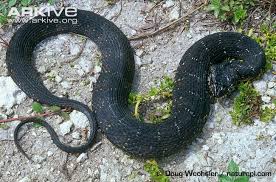Page 13 of 20
Re: Herpetology B/C
Posted: February 12th, 2018, 3:45 am
by Froggie

1. Genus and common name
2. Is this a ring species?
3. If yes, name two characteristics that show it is a ring species. If no, name 2 ring species.
Re: Herpetology B/C
Posted: February 12th, 2018, 12:07 pm
by Galahad
Ensatina - ensatina (Part of the lungless salamanders, it's common name is it's genus name)
Yes, it is a ring species. In both anatomy and ecology.
1) Widespread distribution
2)Ring distribution around a geographical barrier
Re: Herpetology B/C
Posted: February 12th, 2018, 1:44 pm
by Froggie
Galahad wrote:Ensatina - ensatina (Part of the lungless salamanders, it's common name is it's genus name)
Yes, it is a ring species. In both anatomy and ecology.
1) Widespread distribution
2)Ring distribution around a geographical barrier
Correct, your turn!
Re: Herpetology B/C
Posted: February 13th, 2018, 12:12 am
by Galahad
http://www.sunshineserpents.com/images/ ... A3_web.jpg
Image ^^
1) Identify the Order, Family, and Genus of this snake
2) This snake has two heads, what is the name of this condition?
3) What pigmentation condition does this snake have?
4) Can this specimen be poisonous? If so, what is the rule for it.
5) Why do snakes flick their tongue?
6) Name 4 animals that they commonly eat
7) How do they affect the ecosystem? Name one of their predators and the climate they reside in.
8) Is this particular specimen venomous?
Re: Herpetology B/C
Posted: February 14th, 2018, 8:33 pm
by Almandine
1. Squamata, Colubridae, Lampropeltis
2. Two headed syndrome idk
3. Like, really pale
4. Nah
5. To smell via Jacobson's organ
6. Small mammals, birds, snakes, lizards
7. Controls the rattlesnake and copper head population (ophiophagy). Large birds of prey, range includes southern California and Arizona, so guessing a xeric climate.
8. Nah
Re: Herpetology B/C
Posted: February 16th, 2018, 5:07 pm
by Galahad
Almandine wrote:1. Squamata, Colubridae, Lampropeltis
2. Two headed syndrome idk
3. Like, really pale
4. Nah
5. To smell via Jacobson's organ
6. Small mammals, birds, snakes, lizards
7. Controls the rattlesnake and copper head population (ophiophagy). Large birds of prey, range includes southern California and Arizona, so guessing a xeric climate.
8. Nah
1. Correct
2. Incorrect, polycephaly is the condition of having more than one head
3. Incorrect, albino
4. Incorrect, Lampropeltis snakes can be poisonous by the red, yellow rule
5. Correct.
6. Correct but small mammals can be more detailed
7. Sure why not
8. Correct
Re: Herpetology B/C
Posted: February 18th, 2018, 1:23 pm
by Almandine
I believe you're talking about coral snakes (genus Elapidae) when you refer to the red touching yellow rule. Otherwise, milk snakes are not poisonous.
Identify each snake by its genus and provide correct reasoning on how you got your answer.
1.

2.

3.

Re: Herpetology B/C
Posted: February 19th, 2018, 1:17 pm
by Avalanche
1. Racer (Genus: Coluber) Racers have smooth dorsal scales, and usually no blotches. Under the neck is white.
2. Rat Snake (Genus: Elaphe) Rat Snakes have smooth dorsal scales, and usually have a lot of white blotches.
3. Water Snake (Genus: Nerodia) Water Snakes have keeled dorsal scales, and have some form of stripes, on the dorsal scales.
Re: Herpetology B/C
Posted: February 19th, 2018, 3:07 pm
by Almandine
Corecc you may continue
Re: Herpetology B/C
Posted: February 19th, 2018, 3:37 pm
by Avalanche

1. What is the Genus and Family of this species?
2. There is one species in this family that retains larval features into adulthood. What is this called?
3. Give the Common Name of this species.
4. What is this genera's common habitat?




